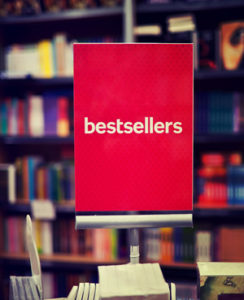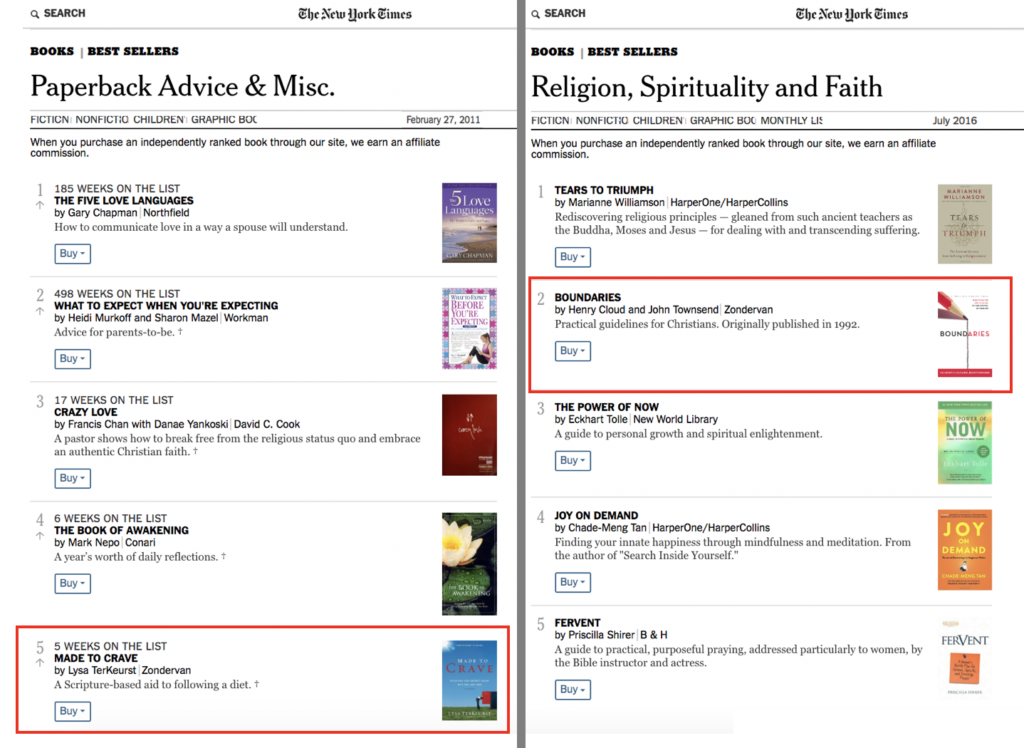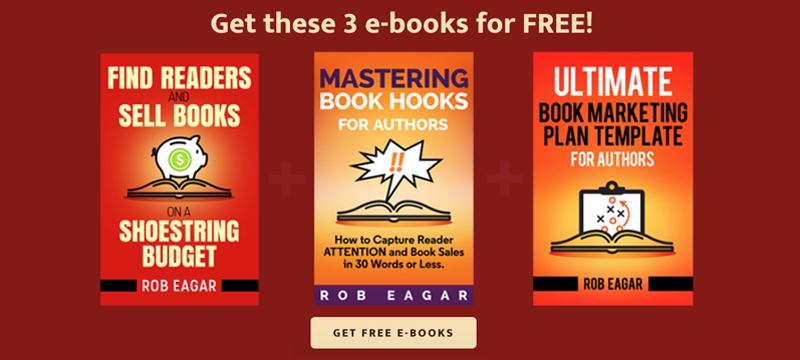 How to Be a New York Times Bestseller
How to Be a New York Times Bestseller
"I'd really like to be a New York Times bestseller. But, how do you do it? How does the list work?" These are some of the most common questions that authors ask me.
Do you dream of becoming a bestselling author? Do you wonder how other authors routinely achieve bestseller status, such as James Patterson, Danielle Steel, Brene Brown, or Tony Robbins? I’m about to pull back the curtain and give you a sneak peek inside the process.
Publishing a book is one of the most effective ways to grow your personal brand and build a business. Publishing a New York Times bestseller is considered the gold standard. The achievement can lead to increased media exposure, higher speaking fees, other book deals, expanded consulting opportunities, etc.
But, how do you make the list? Is it magic? Is it money? Many authors wonder why their books don’t become bestsellers when they see other writers reach the summit. The process may seem easy from a distance, but it’s a lot harder than most authors realize.
As a book marketing consultant, I’ve helped both fiction and nonfiction authors hit The New York Times bestseller list. I even helped a nonfiction book become a New York Times bestseller after 23 years in print. In total, the authors whom I've coached have produced over 10 New York Times bestselling books. I’ve also worked in the publishing industry for over 14 years and published five books myself. Below are examples of books that I've helped hit the list:

Why would I share an insider’s view? Educated authors tend to be successful authors. In my experience, a lot of people have unrealistic expectations about becoming a bestseller. Some think it's easy to hit the list, or they think it's okay to cheat the system. I beg to differ.
To be clear, I'm not a fan of authors who just want to "hit the list." Publishing a book should be about sharing a message with the world to teach, entertain, or inspire other people. In contrast, hitting a list tends to be more about satisfying personal ego. I prefer coaching authors who think of their readers first and the personal accolades second. If a book happens to make a bestseller list, that’s just icing on the cake.
However, if you're reading this article, I assume you're intrigued about how to become a New York Times bestseller. Before you go down that road, let me help clarify the details that are involved.
How Does The New York Times Bestseller List Work?
Most people believe that The New York Times bestseller list is based solely on measuring actual book sales. That makes logical sense, right? But, you may be surprised to learn that the opposite is true. In 1983, an author sued The Times claiming that they kept his book off the bestseller list even though he sold enough copies to qualify.
However, the judge sided with lawyers from The Times who countered that "the list was not mathematically objective, but rather editorial content and thus protected under the Constitution as free speech." Therefore, bestseller lists are legally considered editorial content, rather that factual content. That means the New York Times has the right to exclude or include any book from a bestseller list at their discretion. At the end of the day, it's their judgement call.
Types of New York Times Bestseller Lists & Total Slots Available
Hitting The New York Times bestseller list is extremely difficult no matter what kind of book you write. Currently, there are 7 types of bestseller lists for adult books that update once a week (4 for nonfiction and 3 for fiction). Plus, there are 5 bestseller lists that update once a month. For children’s books, there are 4 weekly lists. Below are the names and number of available slots for each type of adult book list:
- Fiction Combined Print & E-Book List - 15 total slots
- Fiction Hardcover List - 15 total slots
- Fiction Paperback List - 10 total slots
- Nonfiction Combined Print & E-Book List - 15 total slots
- Nonfiction Hardcover List - 15 total slots
- Nonfiction Paperback List - 10 total slots
- Nonfiction Advice, How-To & Miscellaneous List - 10 total slots
- 5 Monthly Lists: Business, Manga, Mass, Middle Grade, Young Adult - 10 total slots
- 2 Audio Book Monthly Lists: Fiction and Nonfiction - 15 total slots
When you see all of these lists and slots, it would appear that there are plenty of opportunities to become a bestseller. However, there’s a catch. The New York Times allows the same book to hit more than one list at the same time. In other words, the same 10 – 15 books usually take up the majority of all the available slots every week.
In addition, most self-help books and business titles are limited to the "Advice, How-To & Miscellaneous List" where the competition is extremely fierce. You’re fighting for space against an onslaught of weight loss books, relationship books, religious books, humor titles, celebrity memoirs, etc. The battle is like watching hundreds of people all try to cram into Walmart right when they open the doors for a Black Friday Sale. Under that level of pressure, how does a book actually get on The New York Times bestseller list?
How Many Books Do You Have to Sell to Be a New York Times Bestseller?
If you want to become a bestseller, you must sell at least 5,000 - 10,000 books in one week. The amount needed to succeed fluctuates based on the level of competition and the number of new releases each week. The nonfiction lists tend to be more competitive and usually require weekly sales of 7,500 copies or more.
The New York Times counts the weekly sales starting the previous Sunday through Saturday. Also, books must be traditionally-published and sold in bookstores nationwide.
Self-published titles are rarely accepted, except for an occasional romance novel on the fiction lists.
In addition, you can't just sell 10,000 books on Amazon to people in one city, state, or region. The New York Times requires that book sales must be spread across America using multiple retailers, including Amazon, B&N bookstores, Books-a-Million, independent bookstores, etc. Sales must be dispersed, rather than concentrated at one place.
To compile the bestseller lists, The New York Times pulls a weekly sales report from a list of online retailers and bookstores scattered across the country. Their proprietary list of stores is guarded with same vigor as protecting the original recipe for Coca-Cola. Keeping their list of reporting bookstores a secret is meant to prevent authors and publishers from rigging the system, which leads to an obvious question...
Can You Buy Your Way onto the Bestseller Lists?
Yes. There have been several occasions when authors used their own money to buy thousands of copies of their books. It’s an expensive process than can cost $100,000 - $250,000. These self-funded orders are processed through shady third-party companies who covertly place large bulk purchases through bookstores that report to The New York Times. Most people, including myself, consider this practice unethical, because the sales aren’t based on actual customer orders. Authors who stoop to this low level are sleazy sellouts.
The Right Way to Become a New York Times Bestseller
Is there an ethical, effective way to become a bestseller? Yes, the answer is called “pre-order sales.” A pre-order occurs when someone buys a book before the official release date. For example, if your book won't be available to buy in stores until November 1st, people can still purchase beforehand and wait for it to be shipped. Pre-orders are usually accepted by all of the major online retailers around 4 – 6 months in advance.
Pre-order sales are important for two reasons. First, pre-orders give publishers leverage to convince retailers to stock up early on a new book. Filling the distribution pipeline before a book's launch date is crucial to maximize sales and boost the bestseller potential. If distribution is weak and availability runs out, then a book can get listed as “out of stock,” which can ruin all hopes of hitting a bestseller list.
Second, there’s a secret about pre-orders that many authors don’t know. The New York Times allows all pre-orders to be counted towards a book’s first week of sales. For instance, if you sell 5,000 pre-orders before release and another 5,000 copies during the first official week, then The New York Times will count your first week’s total sales as 10,000 copies. This odd reporting method allows authors to get a head start towards hitting the bestseller lists. It’s a lot easier to sell 10,000 copies in the “first week” when you get several months beforehand to capture a lot of pre-orders.
How to Become a New York Times Bestselling Author
Securing pre-orders to hit the bestseller list involves two major components. First, you need a large audience. Second, you must entice people to purchase your book early. To access a large audience, you can either build your own following or connect with influencers who already have a lot of followers. Below are examples of common tactics that bestselling authors employ.
Build a large email list with at least 50,000 – 100,000 subscribers.
Even though email has been around for decades, it has proven to be superior at generating book sales over all of the social media platforms. Email is also inexpensive and easy for any author to use.
Forego your speaking fee in exchange for a big book purchase, such as 250 – 1,000 copies.
If you get paid $5,000 to speak in public, then ask the event director to buy $5,000 of your books instead of giving you a speaking fee. Make sure the bulk sale is run through a reporting retailer, such as a local Barnes & Noble or Books-a-Million store. Then, books are shipped to the event attendees after the release date. Bulk sales need to be spread across America using different retailers. If sales are concentrated to one area or one retailer, your book can get flagged by The New York Times and banned from the bestseller lists.
Ask business clients to buy books in bulk for their employees.
I know authors who have received custom orders of 500 – 5,000 copies using this approach. As long as the custom order is purchased through a reporting bookstore, then the sales can count toward the bestseller lists.
Schedule appearances with other influencers to access their large audiences.
If you don't have a large audience, then piggyback on someone else's large audience. For example, secure author interviews on well-known podcasts, TV shows, popular blogs, or video webinars to reach a larger group of readers. Shrewd authors develop a network of influencers they can tap when needed to help promote their book during the critical pre-order phase.
Create a launch team of rabid fans who spread word of mouth.
A book launch team serves as a group of people who volunteer to tell other people about your book. Typical activities include posting details about your book on social media, writing reviews on Amazon, forming book clubs, buying books for friends, etc. Their efforts are rewarded with exclusive conference calls with the author, bonus content, product discounts, backstage access at events, etc.
How to Get Pre-Orders for the Bestseller Lists
It takes a lot of effort to build a large audience. But, how do you get thousands of people to pre-order a book several weeks in advance? Use the power of irresistible incentives. Give away free stuff that people can’t refuse. Below are effectives incentives that I’ve used with my author clients:
- Give away the first 3 – 5 chapters from the book in a digital format
- Offer access to a private webinar with the author
- Win a free coaching session or Q&A chat with the author
- Offer discounts and coupons related to other products and services
- Receive entry into a private online discussion group
There are endless options to incentivize readers to pre-order a book. However, success is ultimately based on how well you create a sense of urgency and the fear of missing out. For instance, make sure people realize that all incentives will disappear after your book's release date. People must know a negative consequence will occur in order to overcome their natural procrastination. In my experience, most pre-orders occur within the last two weeks before a book's publication date. But, that final rush can make all the difference between hitting or missing the bestseller list.
If you want to become a New York Times bestseller, you don’t need a huge advertising budget. You don’t need your own radio or TV show (although that certainly helps). Instead, you must generate thousands of pre-orders. You can accomplish this goal by building your own audience through email, securing media coverage, connecting with major influencers, and offering irresistible incentives.
I've had the pleasure of telling multiple clients, "You just became a New York Times bestselling author for the rest of your life!" Use the tips that I described in this article, and I hope to see you achieve the same success one day.
How to Make Your Next Book Launch a Winner
If you're serious about mastering your book sales, you will love my Book Marketing Master Class.
Want to pick my brain or get expert insights on your upcoming book launch? Purchase a Private Author Coaching Session with me for personal 1:1 instruction.
GET MY FREE GIFT!
To thank you for reading this article, I'd like to give you 3 free e-books to help jumpstart your book sales.
Click here to join my email newsletter for authors and get these resources as my gift.
“I recommend Rob Eagar to any author looking to take their book campaign to a higher level.”
Dr. Gary Chapman
#1 New York Times bestselling author of The Five Love Languages
 “I give Rob Eagar my highest recommendation. If you want to increase your book sales, make him the first person you hire.”
“I give Rob Eagar my highest recommendation. If you want to increase your book sales, make him the first person you hire.”
Lysa TerKeurst
5-time New York Times bestselling author
 “Rob Eagar’s expertise helped me develop a new brand and create an exciting new website. It was beyond my expectations and included everything I asked for and more.”
“Rob Eagar’s expertise helped me develop a new brand and create an exciting new website. It was beyond my expectations and included everything I asked for and more.”
Wanda Brunstetter
6-time New York Times bestselling novelist with over 10 million copies sold
 “Rob Eagar gets great results, plain and simple. I’m very happy with what Rob did for me, and I highly recommend him.”
“Rob Eagar gets great results, plain and simple. I’m very happy with what Rob did for me, and I highly recommend him.”
Dr. John Townsend
New York Times bestselling co-author of Boundaries


